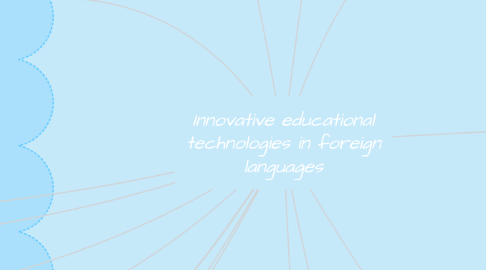
1. Action-Oriented Roles
1.1. Shaper
1.1.1. Implementer
1.1.1.1. Completer Finisher
1.1.1.1.1. Team Worker
2. People-Oriented Roles
2.1. Coordinator
2.1.1. Resource Investigator
3. Thought-Oriented Roles
3.1. Plant
3.1.1. Monitor-Evaluator
3.1.1.1. Specialist
4. Heuristic Technique
4.1. or self-discovery that employs a practical
4.2. method that is not guaranteed to be
4.3. optimal, perfect or rational, but which is
4.4. nevertheless sufficient for reaching an
4.5. immediate, short-term goal.
4.6. A heuristic technique, or a heuristic for
5. BYOD (Bring Your Own Device) Approach)
5.1. Cons
5.1.1. Can de distracting for some students
5.1.2. All students may not be able to afford having and bring their own device
5.1.3. Requires additional training for instructors
5.1.4. Possibly opens up the opportunity for cheating
5.2. Pros
5.2.1. Individualized Learning
5.2.2. Increased Student Involment
5.2.3. Creates opportunities for collaborative learning
5.2.4. Creates varities in learning and assignments
5.2.5. Student participation insreases
5.2.6. Learning becomes student-driven
5.2.7. Cost-saving
6. 3 Types of Artificial Intelligence:
7. 2. Artificial General Intelligence
7.1. Machine Intelligence: Refers to a computer that is as smart as a human across the board
8. 1. Artificial Narrow Intelligence
8.1. Machine Learning: specialises in one aread and solves one problem
9. 3. Artificial Super Intelligence
9.1. Machine Counsciousness: an intellect that is much smarter than human brains in practicallz every field
10. The 9 Belbin Team Roles
11. Deligating
12. Behaviorism
12.1. Lecture
12.2. Drill and Practice
12.3. Rote learning
12.4. Multiple choice tests
13. Mindset
13.1. Growth mindset
13.1.1. Intelligence and general qualities can be developed
13.1.2. Intelligence and general qualities grow through learning and thinking
13.1.3. – Heredity determines only a part of the variance in intelligence
13.2. Fixed mindset
13.2.1. Intelligence and general qualities can not be developed
13.2.2. – Intelligence and general qualities determine what people can learn
13.2.3. – Heredity determines the highest level people can reach
14. Synergy of Teaching Methods & Learning Theories
14.1. Constructivism
14.1.1. Discovery
14.1.2. Collaborative group work
14.1.3. Scaffolding
14.1.4. Self-guided learning based on personal experience
14.1.5. Peer grading/review
14.2. Connectivism
14.2.1. Self-directed quest for content
14.2.2. Sharing of content, sources
14.2.3. Spontaneuos learning group
14.2.4. Creates knowledge collaboratively
14.3. Cognitivism
14.3.1. Lecture
14.3.2. Visual tools: mind maps, charts etc to facilitate memorization for learning
14.3.3. Multiple choice & essay assessment
15. The 4 Cs of 21th century skills
15.1. Creative Thinking
15.1.1. Divergent
15.1.2. Nonlinear
15.1.3. Intuitive
15.1.4. Organic
15.1.5. Emotional
15.2. Critical Thinking
15.2.1. Focused
15.2.2. Linear
15.2.3. Intentional
15.2.4. Systematic
15.2.5. Logical
15.3. Collaborating
15.3.1. Deciding
15.3.2. Producing
15.3.3. Reporting
15.4. Communicating
15.4.1. Listening
15.4.2. Speaking
15.4.3. Writing
